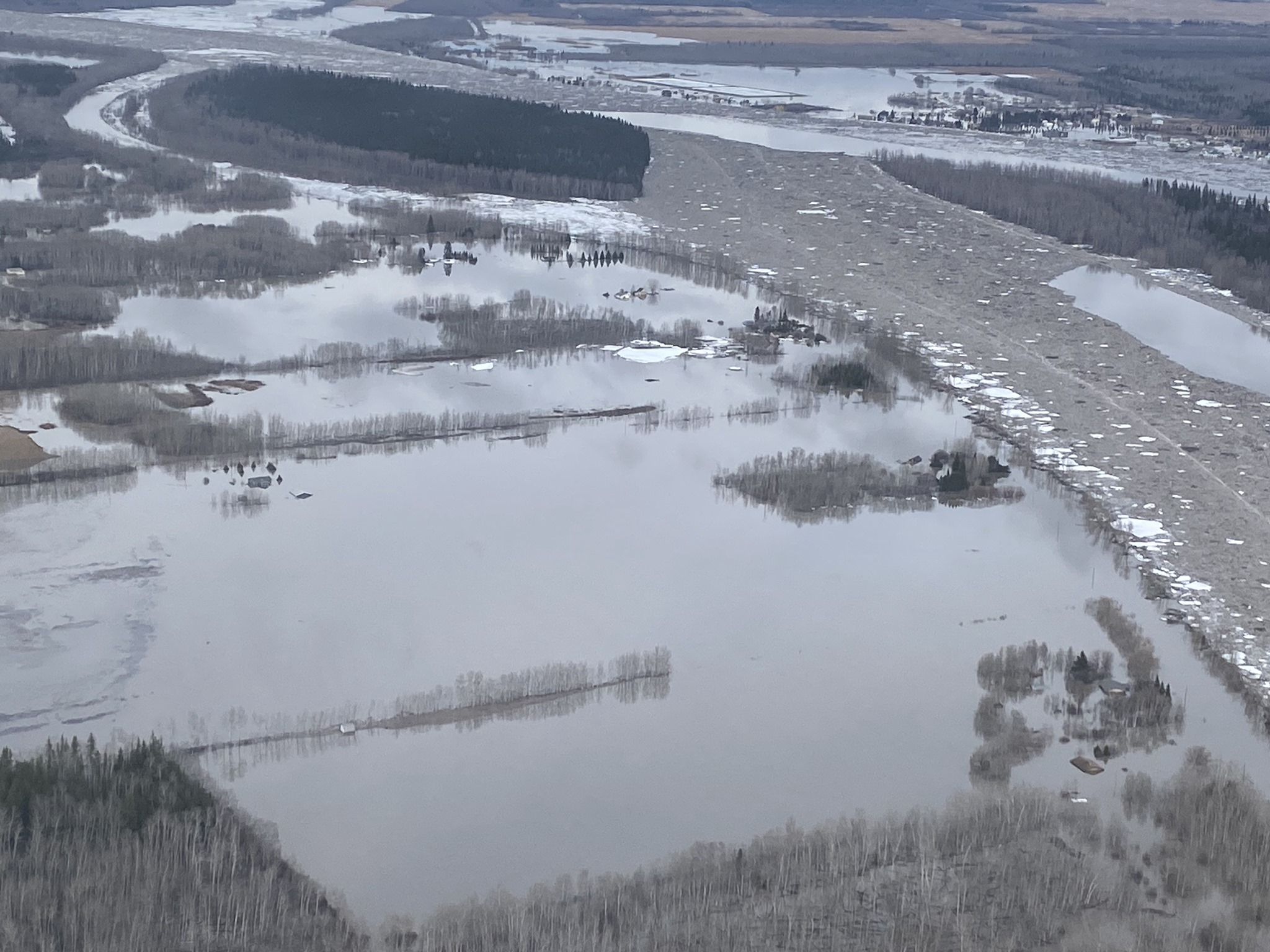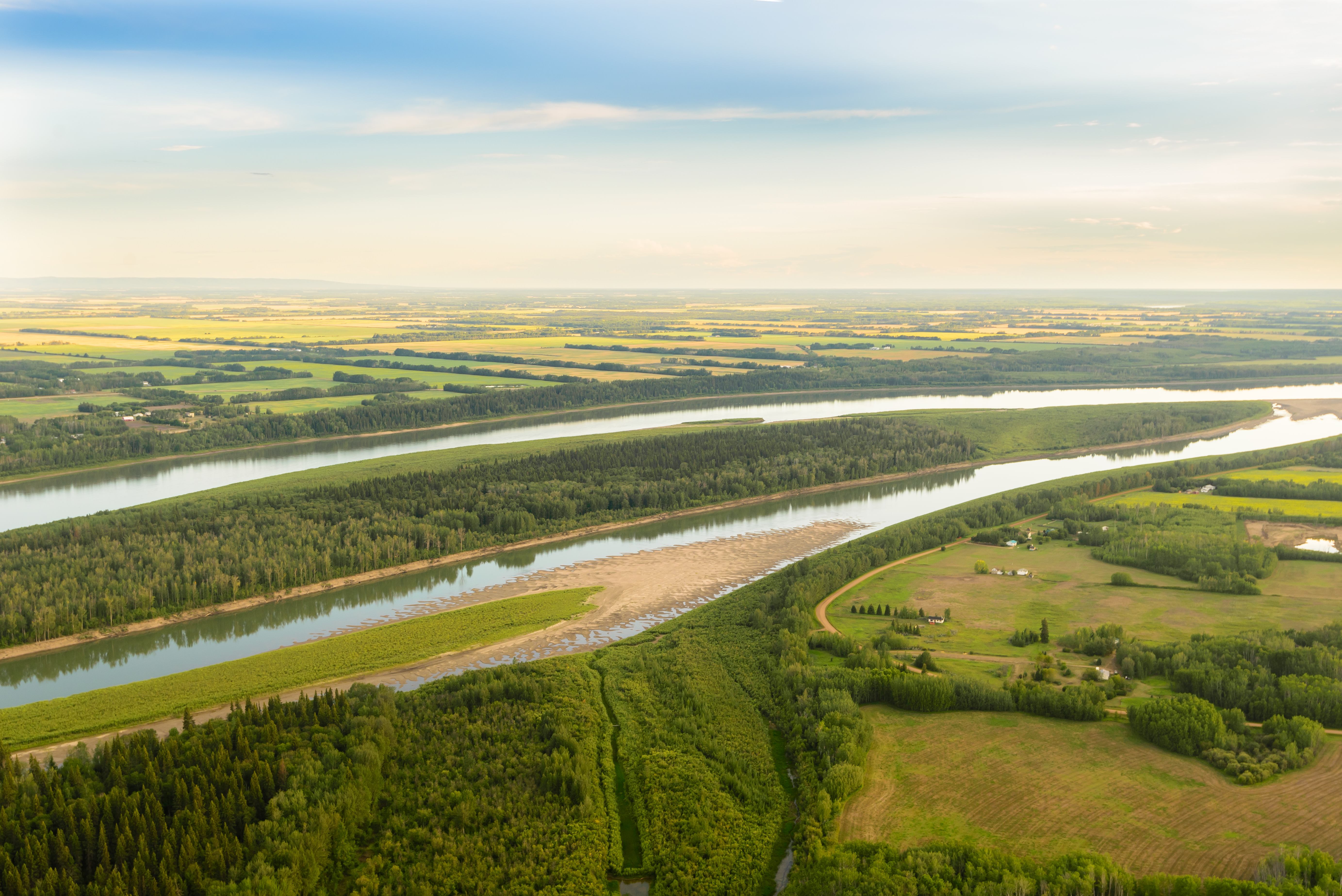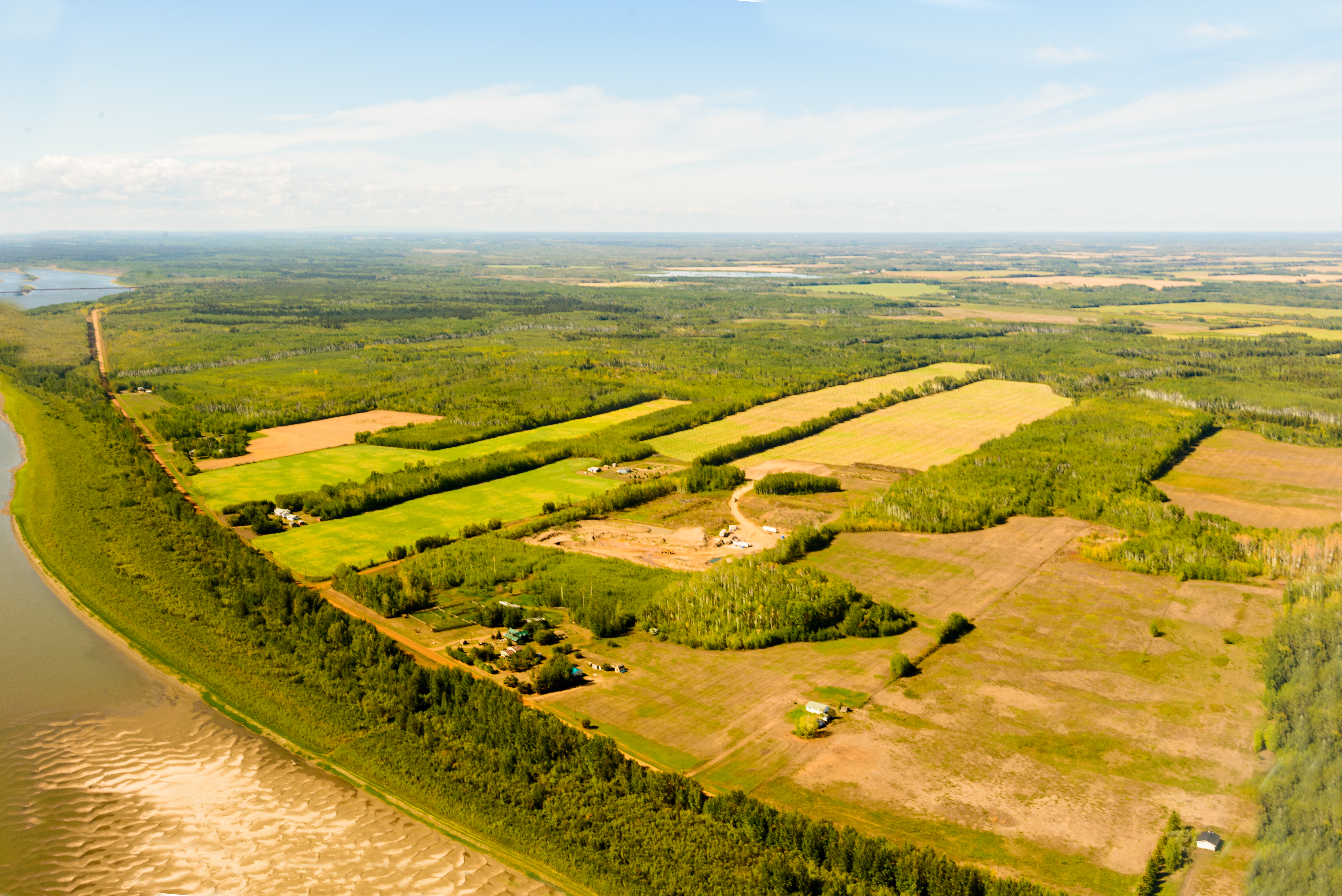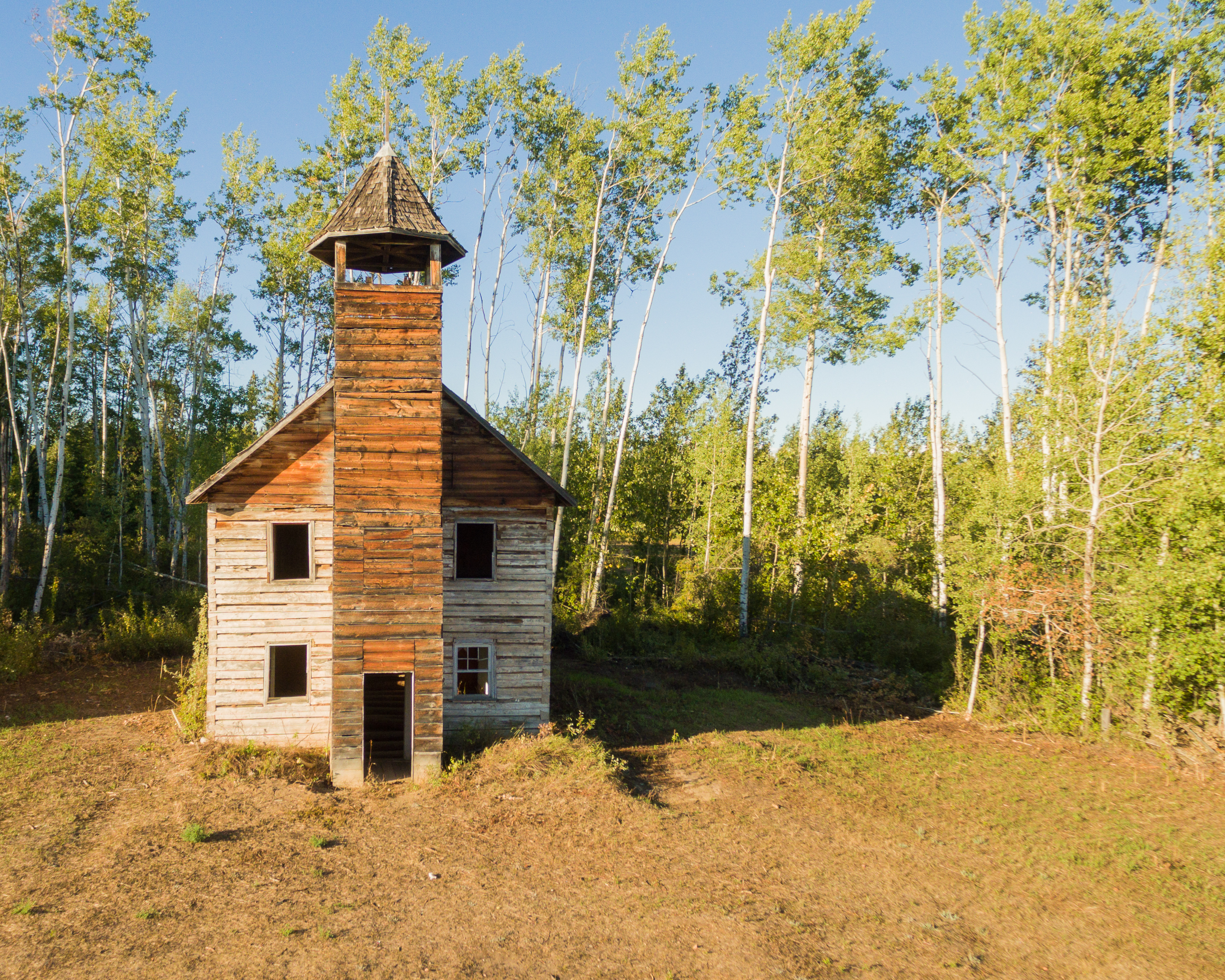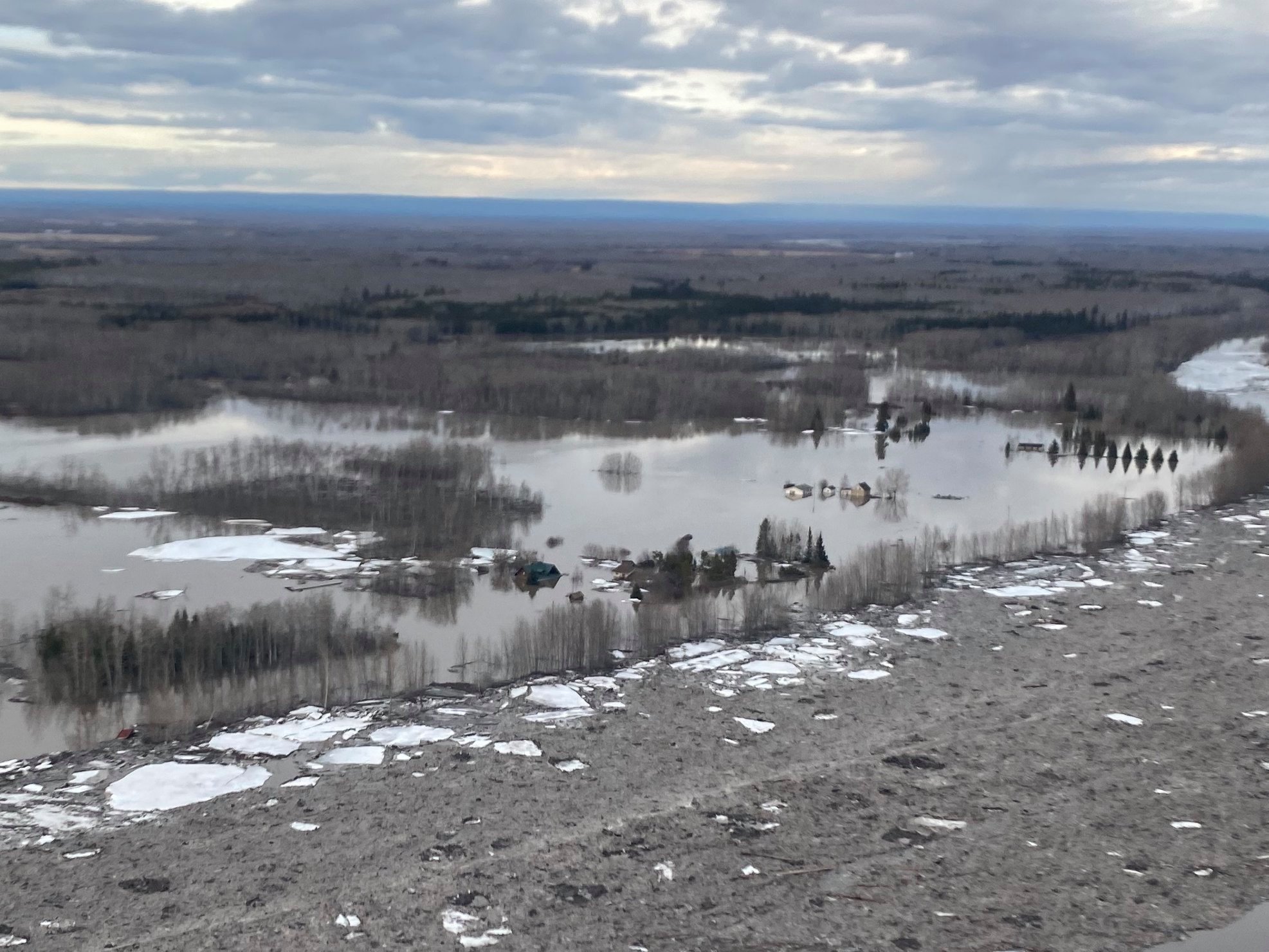DID YOU KNOW?
There are a few theories regarding where Buttertown got its unique name.
One states that residents made butter in such quantity that it was traded to the Hudson's Bay Company and to independent traders for resale locally - and delivery to remote northern locales.
Another is that the trails were so bumpy that cream in transport would soon turn to butter!
Enter page title here
Buttertown
| |
oIf you linger at the Fort Vermilion Bridge or camp at the Bridge Campsite you are on the doorstep of "Buttertown." This settlement is located across the Peace River from Fort Vermilion. Land holders had one or more river lots, each with river frontage and land for pasture, hay, crops and gardens. The now abandoned Buttertown School dates from 1948. Hand-hewn logs were used to build the St. Louis Roman Catholic Church, a store, pool halls, cabins and several houses. It is "North Vermilion" on maps and signs, but locals still call it "Buttertown." A ferry in the summer (and ice road in winter) provided access between Fort Vermilion and Buttertown. Both of which were unsafe every year during spring thaw and fall freeze - up. Nearly breaking through the ice and "Ice floe hopping" have been made obsolete with the Fort Vermilion Bridge being built in 1974 - but the stories of such activities live on in local legend.
For more information on the connections between Buttertown and the Metis People (specifically women and moontime teachings) click the link below and read Hanna Paul's Thesis!

